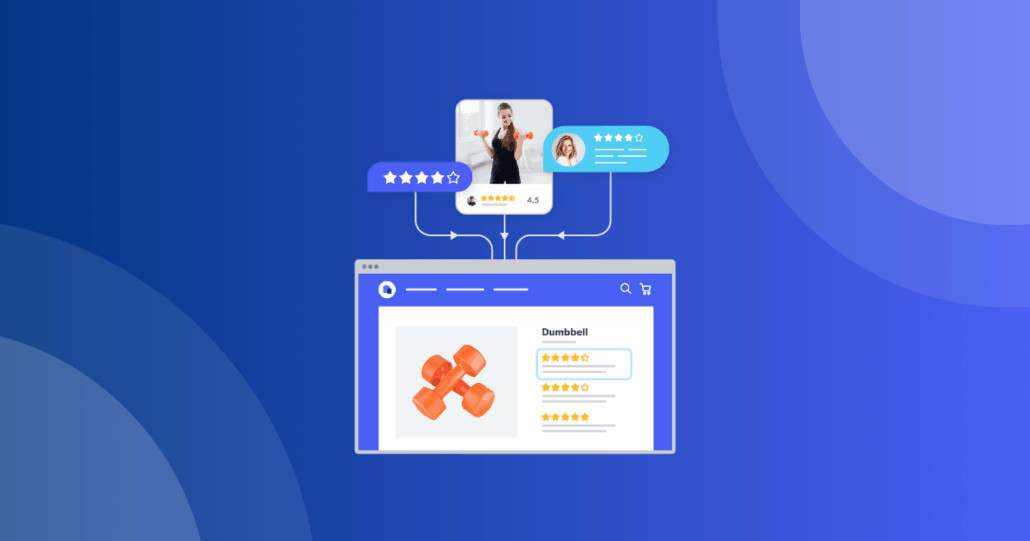December 22, 2015
The holiday season is upon us and with it, one of the most crucial times of the year for brands and retailers. According to an infographic from webloyalty, 85% of European shoppers will do at least part of their Christmas shopping online, and 39% of shoppers intend to spend more than 200 euros online.
The way consumers search and shop for products and services has seen a major change due to the rise in mobile usage, which has also prompted Google to start an entire series of posts about what they identified as I-want-to-know, I-want-to-do, I-want-to-go, and I-want-to-buy micro-moments.
To set yourself apart from the competition and compete for consumers’ attention and budget, Google points out:
“…you have to do more than just be there. You have to be useful too. That means connecting people to what they’re looking for in real-time and providing relevant information when they need it.”
But what type of information has the biggest impact on consumers to help them choose your brand over another? Consumers today highly value peer-to-peer recommendations over marketing messaging. According to a study by Bazaarvoice and The Center for Generational Kinetics, Shopper Sciences and eMarketer, 84% of consumers are influenced by consumer-generated content (CGC) and are twelve times more likely to trust in consumers’ recommendations. Specifically, online reviews impact 67.7% of a survey respondents’ purchasing decisions, and more than half of the respondents (54.7%) also admitted that online reviews are fairly, very or absolutely an important part of their decision-making process. It is clear, therefore, that engaging with CGC is a critical priority for businesses who want to stay ahead of the curve.
Below are three best practices from some of Bazaarvoice’s best-in-class clients on how to maximize the power of CGC:
1) Leverage CGC to provide richer and fresher content on your site to drive traffic and conversion
Customer written reviews keep pages fresh and full of product-specific content, which drives search traffic. Search engines like Google reward sites that stay fresh with valuable, relevant content. As analysed in Bazaarvoice research, the Conversation Index Volume 8, adding reviews to a product page typically results in a 15-25% increase in search traffic. Sealskinz, a UK endurance accessories brand, developed a very successful CGC programme with product reviews and Q&A on their product pages. This programme led to additional traffic to their site with a significant increase in conversion rate; in December of 2014 alone, shortly after launching their CGC programme, Sealskinz saw a 102.6% lift in conversion from visitors who engaged with reviews compared to those who did not.
2) Multiply the impact of CGC from brands
Today’s marketplace is a networked dialogue of information sharing between businesses and consumers –the more effectively information is shared across these nodes, the better the relationship between all members. Brands like Philips are able to leverage the power of the Bazaarvoice network – the world’s largest network of active shoppers connecting more than one-half billion consumers to thousands of retailers and brands – to push their CGC to the product pages of retailers such as Conrad. This allows Philips to multiply the positive effects across its retailers. The content is clearly marked as coming from the brand’s site, adding a level of reassurance for the consumers; Bazaarvoice technology also ensures that the shared content is not seen as duplicate by search engines.
3) Provide consumers with easy access to answers
Reviews are a great source of additional product information, but sometimes do not cover all use cases or provide an answer to all questions, prompting consumers to leave a product page and continue their search (and purchase) elsewhere. An easy-to-use tool, Questions & Answers, allows consumers to remain engaged and interact directly with the brand, retailer or even other consumers to get the answer they need.
French retailer Probikeshop recently launched “Ask a Product Owner (APO)” as part of their Bazaarvoice Q&A module. In addition to the Q&A module that allows the brand and/or the retailer to answer any questions, APO invites other customers to join the conversation. The system automatically emails customers who bought the product to ask if they can provide a “real-life” answer. Within as little as two weeks from activating APO, Probikeshop saw some impressive results:
- The average number of answers per question increased twofold
- Conversion rate incrementally increased by 13% (on top of a previous increase due to CGC on the website)
- The average answering time was cut in half, from 3.5 to 1.7 days
- Since the launch of APO, 67% of answers have been provided by other customers, versus 65% provided by the Probikeshop’s customer service prior APO.
Consumer-generated content represents an enormous opportunity for brands and retailers to generate additional site traffic and achieve a higher conversion rate. It is also highly effective in providing customers with answers to their questions, and more broadly, with content they trust and rely on throughout their purchase journey. It is at this time of the year, when busy, highly-connected consumers turn online to do their holiday shopping, that businesses should leverage CGC across different channels and within a network with other businesses and consumers alike.






